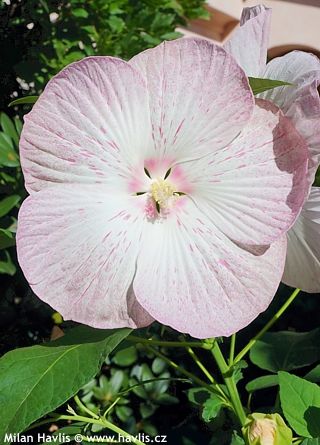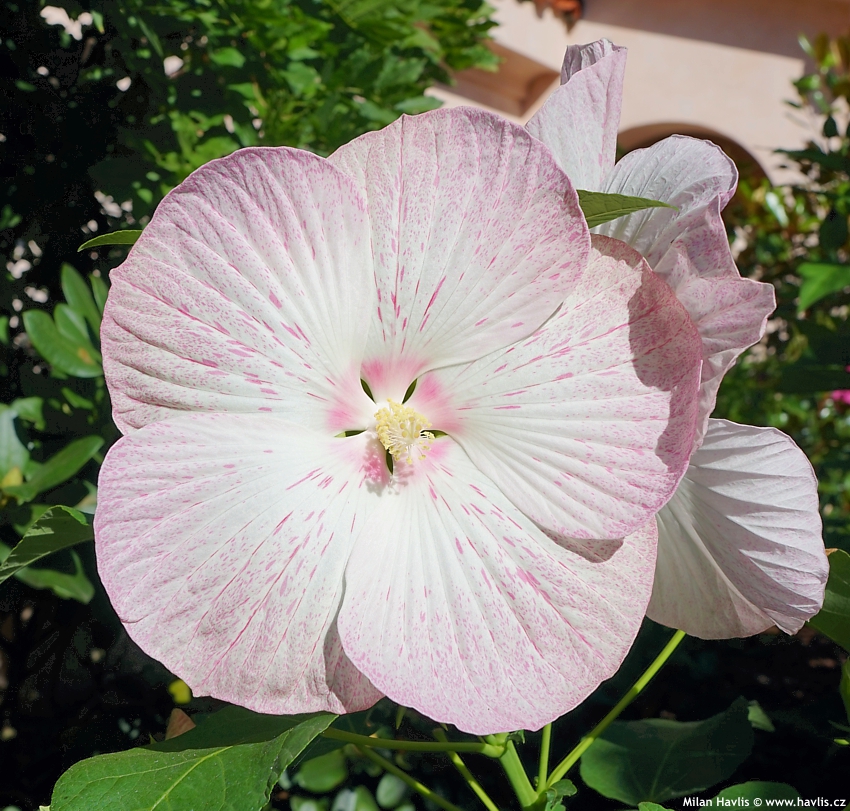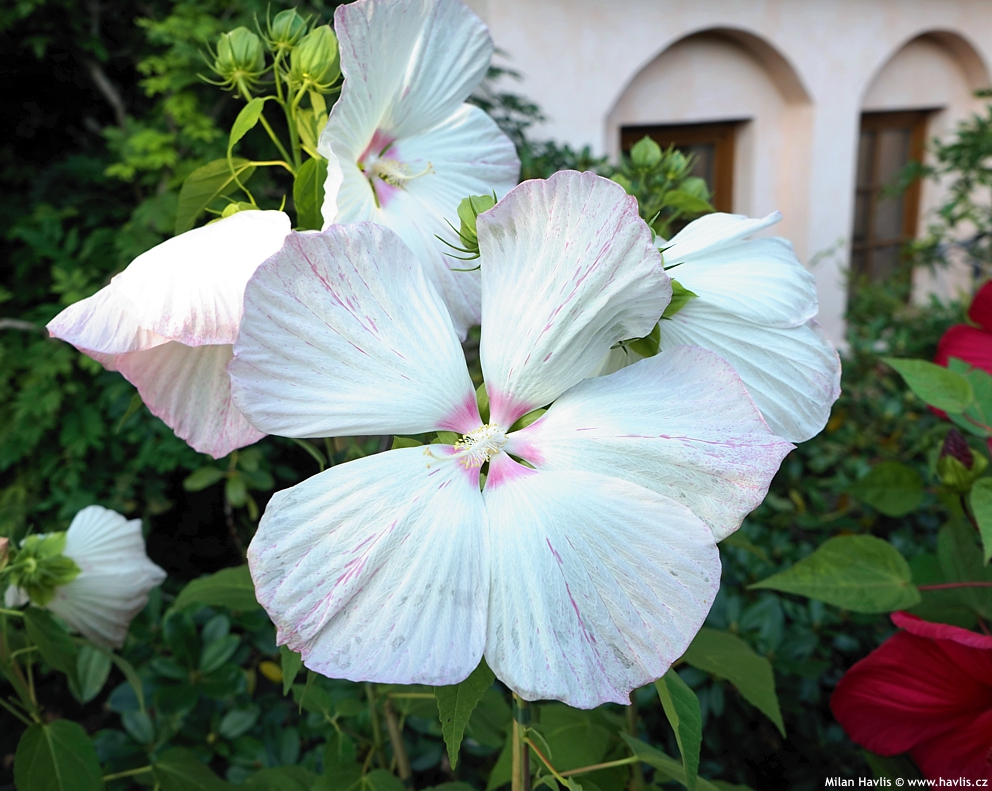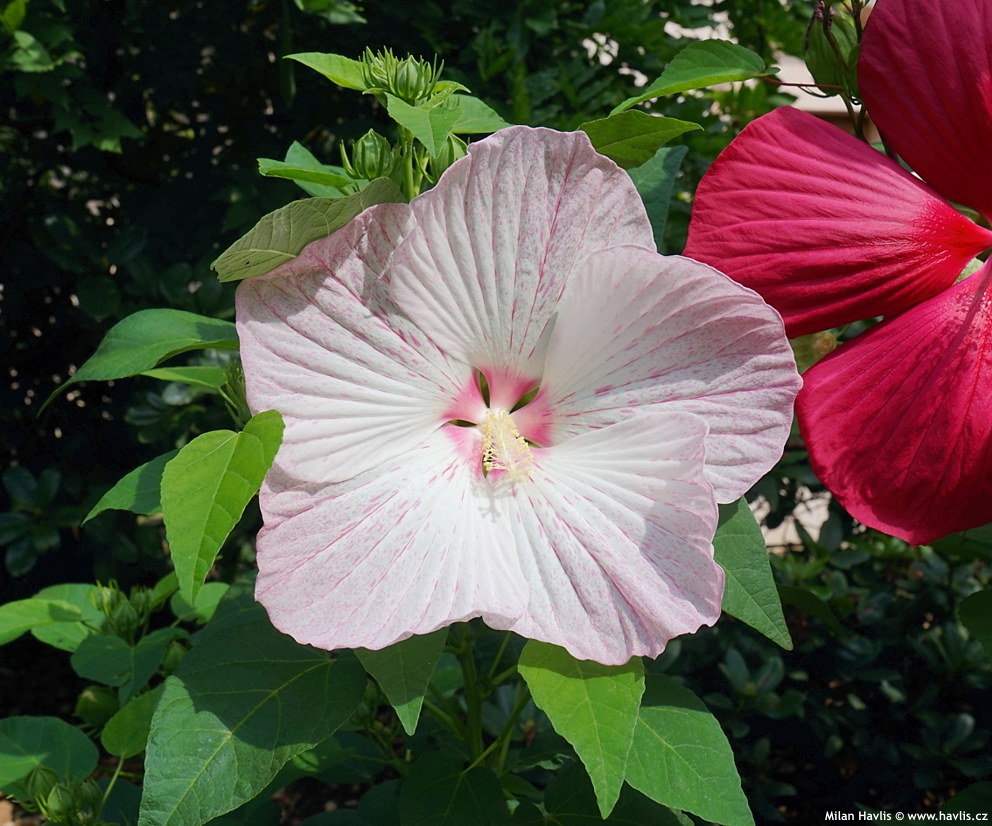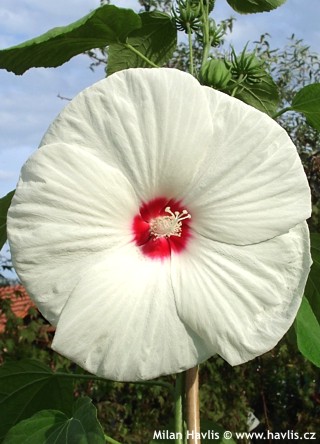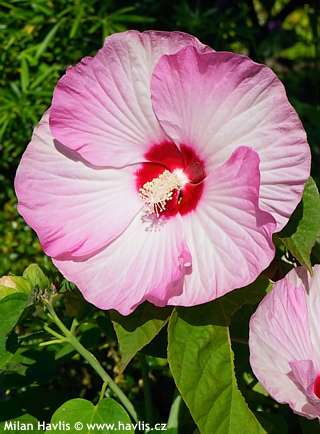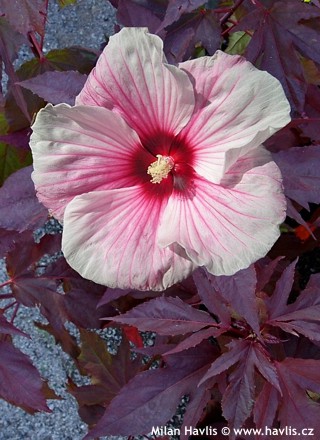Hibiscus moscheutos 'Sparkle' EXTREME SPARKLE swamp mallow, hardy hibiscus
size/type
mid-sized perennial,mid-sized perennial
usual height
0,5-0,6m
usual width
0,6-0,8m
leaves
deciduous broadleaf
colour of leaves
flowers
showy
colour of flowers
blooming time
August-October
location
full sun
USDA zone (lowest)
7 (down to -23°C)
winter protection
for zone 5+6

for zone 7

categorized
Hibiscus
Swamp mallow and its hybrids have been sought after plants for the past few years now. They are perennials with sturdy stems that have large, tropically looking flowers. This variety was bred by Cornelis A.Oostveen from the Netherlands who specializes in large-flowered hardy hibiscus and has introduced some of the finest compact varieties such as Oak Red, Extreme Hot Pink, and Extreme Magenta. Patent No. PP21798 was issued in 2011.Description of the plant:
EXTREME SPARKLE is a unique swamp mallow variety with medium large flowers - 18-19 cm across. They are not pure white like older varieties, their petals show prominent pink venation towards the pink eye in the centre. Flowering begins in August and depending on plant's age and fertilizing new flower buds can be formed till September or October. Deciduous leaves are deep green, ovate with a narrow tip, and in autumn turn golden yellow with red veins. The breeder claims an overall plant height of 50-60 cm, however, hardy hibiscus sizes can vary a great deal with location so count on a little less in poor or compacted or sandy ground, and perhaps a lot more in fertile, moist or wet ground. Its has upright stems yet the plant gets wider than tall.
The plant is dependent on regular watering and feed supply. Use fertilizers with enough phosphorus for abundant flowering, or any other quick-release fertilizers where nitrogen is not predominant. Any fertilizing has to stop by end September. Still, nitrogen-based fertilizer is useful when the plants wakes up from dormancy in mid spring, but should not be used longer than 8 weeks. Hardy hibiscus emerges very late, sometimes as late as in late May.
For healthy growth and profuse flowering it needs a sunny location with a lot of moisture which can be achieved by good mulching. The soil has to be fertile and permeable, never let it dry out either in summer or during dry winters - its fleshy roots need some moisture also in winter. Hardy to min. -23°C (USDA zone 6). Cut back the plant only a few centimetres above ground level in spring.
Last update 13-08-2018
QUICK PRICE OVERVIEW
CURRENTLY SOLD OUT
WANT TO TRY A SIMILAR PLANT?












